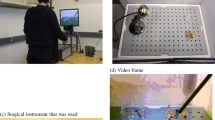Abstract
Image classification techniques have been applied to detect higher pollution episodes in modelled air pollution data. These techniques are widely used in video processing to find patterns in videos. An attempt for the first time has been made to apply these techniques by considering air pollution as continuous video frames as the spatio-temporal changes in the pollution are linked to its previous state of the atmosphere. The applicability of these techniques has been tested over Northern Italy to detect ozone pollution episodes in year 2004 using model simulated concentrations. The methods tested in this paper are pixel, block-based, histogram, pertinent pixel and twin-comparison method. While these techniques have some kind of merits and demerits, a modified pertinent pixel comparison algorithm has been proposed to detect pollution episodes. The proposed method has been validated to detect PM10 episodes over Milan metropolitan area during 2 months in 2008 and is able to detect PM10 episodic events as well as non-events. This method provides a single binary index that can be applied by the air quality modellers and decision makers to determine the pollution episode over a given domain.














Similar content being viewed by others
References
Carnevale, C., Finzi, G., Pisoni, E., Singh, V., & Volta, M. (2011). An integrated air quality forecast system for a metropolitan area. Journal of Environmental Monitoring, 13(12), 3437–47. doi:10.1039/C1EM10303B.
Carnevale, C., Decanini, E., & Volta, M. (2008). Design and validation of a multiphase 3D model to simulate tropospheric pollution. Science of the Total Environment, 390(1), 166–76. doi:10.1016/j.scitotenv.2007.09.017.
Ekin, A., Tekalp, A. M., & Mehrotra, R. (2003). Automatic soccer video analysis and summarization. IEEE Transactions on Image Processing, 12(7), 796–807. doi:10.1109/TIP.2003.812758.
EU. (2014). “EU—air quality standards.” European Commission. http://ec.europa.eu/environment/air/quality/standards.htm.
Ji, D., Wang, Y., Wang, L., Chen, L., Hu, B., Tang, G., Xin, J., et al. (2012). Analysis of heavy pollution episodes in selected cities of northern China. Atmospheric Environment, 50(April), 338–48. doi:10.1016/j.atmosenv.2011.11.053.
Koprinska, I., & Carrato, S. (2001). Temporal video segmentation: a survey. Signal Processing: Image Communication, 16(5), 477–500. doi:10.1016/S0923-5965(00)00011-4.
Kukkonen, J., Mia P., Sokhi, R. S, Luhana, L., Kitwiroon, N., Fragkou, L., Rantamäki, M. et al. (2005). “Analysis and evaluation of selected local-scale PM10 air pollution episodes in four European cities: Helsinki, London, Milan and Oslo.” Atmospheric Environment 39 (15). Fourth international conference on urban air quality: measurement, modelling and management, 25–28 March 2003: 2759–73. doi:10.1016/j.atmosenv.2004.09.090.
Lu, D., & Weng, Q. (2007). A survey of image classification methods and techniques for improving classification performance. International Journal of Remote Sensing, 28(5), 823–70. doi:10.1080/01431160600746456.
Nagasaka, A., and Tanaka, Y. (1992). “Automatic video indexing and full-video search for object appearances.” http://www.citeulike.org/group/18/article/93073.
Rantamäki, M., Pohjola, M. A, Tisler, P., Bremer, P., Kukkonen, J., and Karppinen, A. (2005). “Evaluation of two versions of the HIRLAM numerical weather prediction model during an air pollution episode in Southern Finland.” Atmospheric Environment 39 (15). Fourth international conference on urban air quality: measurement, modelling and management, 25–28 March 2003: 2775–86. doi:10.1016/j.atmosenv.2004.12.050.
Rohr, A. C., & Wyzga, R. E. (2012). Attributing health effects to individual particulate matter constituents. Atmospheric Environment, 62(December), 130–52. doi:10.1016/j.atmosenv.2012.07.036.
Saide, P. E., Carmichael, G. R., Spak, S. N., Gallardo, L., Osses, A. E., Mena-Carrasco, M. A., & Pagowski, M. (2011). Forecasting urban PM10 and PM2.5 pollution episodes in very stable nocturnal conditions and complex terrain using WRF–Chem CO tracer model. Atmospheric Environment, 45(16), 2769–80. doi:10.1016/j.atmosenv.2011.02.001.
San José, R., Stohl, A., Karatzas, K., Bohler, T., James, P., & Pérez, J. L. (2005). A modelling study of an extraordinary night time ozone episode over Madrid domain. Environmental Modelling & Software, 20(5), 587–93. doi:10.1016/j.envsoft.2004.03.009.
Singh, V., Carnevale, C., Finzi, G., Pisoni, E., & Volta, M. (2011). A cokriging based approach to reconstruct air pollution maps, processing measurement station concentrations and deterministic model simulations. Environmental Modelling & Software, 26(6), 778–786. doi:10.1016/j.envsoft.2010.11.014.
Stern, R., Builtjes, P., Schaap, M., Timmermans, R., Vautard, R., Hodzic, A., Memmesheimer, M., et al. (2008). A model inter-comparison study focussing on episodes with elevated PM10 concentrations. Atmospheric Environment, 42(19), 4567–88. doi:10.1016/j.atmosenv.2008.01.068.
US EPA. (2012). “National Ambient Air Quality Standards (NAAQS) | Air and Radiation | US EPA.” http://www.epa.gov/air/criteria.html.
Van Zelm, R., Huijbregts, M. A. J., den Hollander, H. A., van Jaarsveld, H. A., Sauter, F. J., Struijs, J., van Wijnen, H. J., & van de Meent, D. (2008). European characterization factors for human health damage of PM10 and ozone in life cycle impact assessment. Atmospheric Environment, 42(3), 441–53. doi:10.1016/j.atmosenv.2007.09.072.
Zhang, H. J., Kankanhalli, A., & Smoliar, S. W. (1993). Automatic partitioning of full-motion video. Multimedia Systems, 1(1), 10–28. doi:10.1007/BF01210504.
Acknowledgments
This research was done as a project during doctoral degree at the University of Brescia, Italy. Author acknowledges Claudio Carnevale, Giovanna Finzi, Nicola Adami and Sergio Benini for their support and discussions.
Author information
Authors and Affiliations
Corresponding author
Rights and permissions
About this article
Cite this article
Singh, V. Higher Pollution Episode Detection Using Image Classification Techniques. Environ Model Assess 21, 591–601 (2016). https://doi.org/10.1007/s10666-015-9497-8
Received:
Accepted:
Published:
Issue Date:
DOI: https://doi.org/10.1007/s10666-015-9497-8




